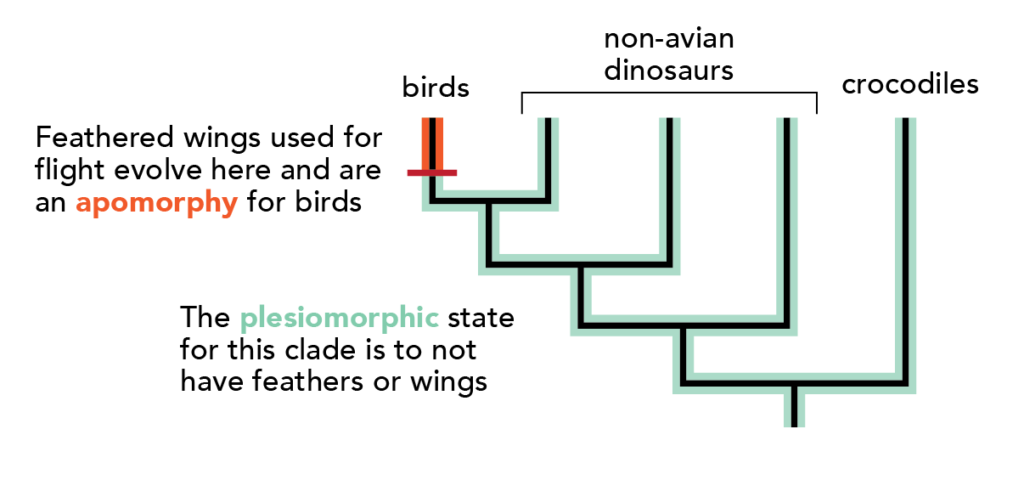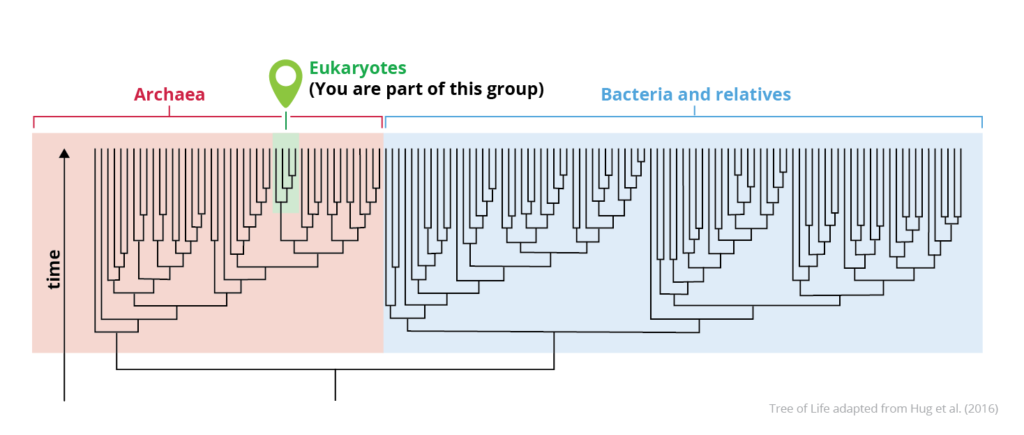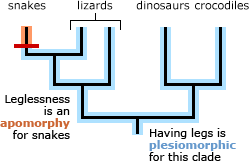Cladistics is a method of hypothesizing relationships among organisms — in other words, a method of reconstructing evolutionary trees. The basis of a cladistic analysis is data on the characters, or traits, of the organisms in which we are interested. These characters could be anatomical and physiological characteristics, behaviors, or genetic sequences.
The result of a cladistic analysis is a tree, which represents a supported hypothesis about the relationships among the organisms. However, it is important to keep in mind that the trees that come out of cladistic analyses are only as good as the data that go into them. New and better data could change the outcome of a cladistic analysis, supporting a different hypothesis about the way that the organisms are related.
Assumptions
There are three basic assumptions in cladistics:
1. Change in characteristics occurs in lineages over time.
The assumption that characteristics of organisms change over time is the most important one in cladistics. It is only when characteristics change that we are able to recognize different lineages or groups. We call the “original” state of the characteristic plesiomorphic and the “changed” state apomorphic.
2. Any group of organisms is related by descent from a common ancestor.
This assumption is supported by many lines of evidence and essentially means that all life on Earth today is related and shares a common ancestor. Because of this, we can take any collection of organisms and hypothesize a meaningful pattern of relationships, provided we have the right kind of information.
3. There is a bifurcating, or branching, pattern of lineage-splitting.
This assumption suggests that when a lineage splits, it divides into exactly two groups. There are some situations that violate this assumption. For example, many biologists accept the idea that multiple new lineages have arisen from a single originating population at the same time, or near enough in time to be indistinguishable from such an event (as in the case of the cichlid fish described previously). The other objection raised against this assumption is the possibility of interbreeding between distinct groups, which occurs at least occasionally in some groups (like plants). While such exceptions may exist, for many groups they are relatively rare and so this assumption often holds true.
What about primitive and derived characters?
You might hear people use the term “primitive” instead of plesiomorphic and “derived” instead of apomorphic. However, many biologists avoid using these words because they have inaccurate connotations. We often think of primitive things as being simpler and inferior — but in many cases the original (or plesiomorphic) state of a character is more complex than the changed (or apomorphic state). For example, as they have evolved, many animals have lost complex traits (like vision and limbs). In the case of snakes, the plesiomorphic characteristic is “has legs” and the apomorphic characteristic is “doesn’t have legs.”



